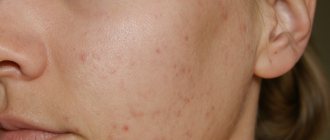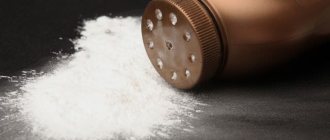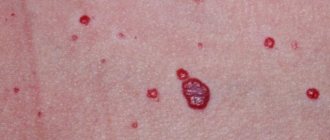Methods of performing mammoplasty
Based on the goals set by the patient, the surgeon performs the operation in different ways. A lot depends on the choice: where the incisions will be made, how long it will take for the sutures to heal after mammoplasty, and whether complications should be expected during the operation. So in practice one of the methods of surgical intervention can be used:
- Transaxillary. The incision is made in the armpit area - the operation is quite complicated, there is a risk of bleeding. Not suitable for correction of asymmetrical breasts and displacement of natural folds.
- Periareolar. At the border between the pigmented areola of the nipple and the surrounding skin. Performed if the purpose of the operation is to tighten the breasts. This way, excess skin is removed, and the stitch heals for 6 months.
- Transabdominal. Insertion of the implant through the periumbilical area. A woman easily tolerates this method and in this case there are no noticeable scars left after mammoplasty.
- Submammary. The fold under the mammary gland is incised. The scar resembles a bra strip.
The doctor decides how to perform mammoplasty. It takes into account the individual characteristics of the patient, her health and the desired result.
Whether marks will remain after the procedure depends on how the woman takes care of the stitches after mammoplasty.
Types of sutures on the chest after surgery and photos
Depending on the breast surgery itself and the professionalism of the doctor, the location of the stitches depends. We will give a description of the options for the location of sutures after mammoplasty surgery for breast augmentation or breast lift, and we will give them a photo of the condition of the scars in about a month (read more about what mammoplasty is, what are the pros and cons of this procedure, and about the consequences after breast augmentation surgery breast augmentation, we talked about in a separate article).
Scar on periolar approach
This type of seam is considered the most invisible in the long run, as it is made along the perimeter of the pigmented skin of the nipple. However, there is a significant disadvantage here. It lies in the fact that the sensitivity of the nipple may disappear for some time or permanently .
On the axillary
This type of suture is used mainly during surgery for asymmetry of the mammary glands. It is usually located near the armpit. Thus, it is practically invisible.
Again, there are some disadvantages, which include open bleeding and difficult access to care for the suture.
On submammary
This seam is considered one of the safest and most invisible , as it is located under the breast itself and can be easily hidden in the future with underwear.
On transareolar
The seam is considered one of the most inconspicuous, but is quite dangerous, since the incision is made on the nipple.
Causes of scar formation
There are people whose bodies are not prone to forming scars, and there are those for whom a simple cut is a big problem. This feature can be inherited or indicate a lack of vitamins and health problems.
In the case of mammoplasty, scars are also formed due to skin tension, which is formed as a result of the insertion of implants. After the operation, the incision is sutured; however, during mammoplasty, self-absorbable threads are not used, but rather ordinary surgical ones are used. Therefore, after 10 days they are removed, which is quite painful.
In addition, there are other possible reasons for the appearance of scars after mammoplasty:
- Genetics. If you have a family history of keloid scars, chances are you will develop them too. But it is difficult to predict the outcome before surgery.
- Professionalism and experience of the surgeon. The breast tissue is dissected layer by layer and then carefully stitched together. If stitches are applied carelessly, the skin becomes rougher.
- Threads for seams. Self-absorbing threads provoke aseptic inflammation and scarring. Therefore, the doctor uses materials that require further removal, but do not give such side effects.
- Incorrect electrocoagulation. To prevent bleeding, the capillaries are “sealed”, but this can only be done on the inner layers of the dermis.
When is revision mammoplasty possible?
Corrective surgery is not necessary in all cases. If there are no serious medical indications, then repeat mammoplasty is performed no earlier than six months after the first. Surgery is necessary when:
- Woman's dissatisfaction with shape, size and location. After the swelling subsided, the patient realized that she wanted to have larger breasts, or she was not satisfied with the wide interbreast space, or her nipples were not positioned correctly.
- Temporary changes. With age, breasts sag, and to maintain attractiveness, women undergo a breast lift.
- Expiration of implant life. Manufacturers guarantee lifelong use of endoprostheses, but doctors advise changing them every 10 years.
- Capsular contracture. Overgrown fibrous tissue must be excised, even if it does not interfere with aesthetics. Under the pressure of growths, blood circulation in the mammary gland can be disrupted.
To reduce the risk of complications, you must undergo a preliminary examination and follow all the doctor’s recommendations. If at this stage the possibility of complications is identified, it is better to choose another method of breast augmentation.
Source: BodyPlastics.ru
Types of scars
Depending on the complexity of removal, appearance and structure, several scars are distinguished: atrophic, normotrophic, hypertrophic and keloid. After mammoplasty, a woman struggles with only three of them; atrophic scars resolve on their own and do not pose a problem.
Keloid
Raised fresh bright red or pink stripes. Over time, they turn pale, but can grow in length and width. Injured skin produces excess collagen, which causes the scar to protrude above the level of healthy tissue. Accompanied by a burning sensation and itching. They must be treated as soon as they become noticeable and the wound has completely healed - if you start the process, they will cause a lot of trouble in the future.
Normotrophic
They are on the same level as healthy skin, but darker or paler than the overall tone. Unlike keloid scars, normotrophic scars have reduced sensitivity, they are quite elastic and do not tend to increase over time.
Hypertrophic
They are similar to keloids - they are also formed with a large production of collagen in the inflamed area, which is why they are higher than healthy skin. They resemble a thin reddish thread. Pink and red shades in scars indicate damage to the capillaries: excess collagen puts pressure on the vessels, as a result of which blood flow is disrupted and the required amount of nutrients does not reach the epidermis.
Due to impaired blood flow, an increased temperature may be observed at the site of redness.
However, unlike keloid scars, hypertrophic scars tend to decrease after 1-1.5 years.
General overview of the procedure
Mammoplasty is a surgical restoration of the size or shape of the breast by installing specially designed implants into the mammary gland. The operation is performed under general anesthesia, the incision is made with a surgical scalpel.
To install a foreign body in the chest, it is necessary to form a pocket by separating the tissues from each other. Such an intervention does not leave its mark on the body and requires it to have certain reserves for rapid recovery.
How to care for scars after mammoplasty
For the first 3 weeks after surgery, it is not recommended to take a bath; during personal hygiene, the sutures should be protected from water, for example, wrapped in plastic wrap.
To prevent complications, you must follow all the doctor’s recommendations, and first of all, do not rub the scar. Experts advise using silicone bandages, bandages and compression garments. Of course, during the rehabilitation period you will have to give up the beautiful, but uncomfortable bra with underwires.
To protect the wounds from inevitable friction with clothing, silicone patches are glued to them. In addition to protection, the patch narrows and softens scars, but this effect is only possible with constant use.
When the wound has completely healed - scarring, crust formation and its death - the operated area can already be smeared with a cream with an anti-scar effect, and after a shower the skin can be nourished with moisturizing lotions.
Among other things, in the first 4 months you should avoid heavy physical activity and lifting weights exceeding 3 kg. This limitation is due to the fact that the skin on the scar is not yet strong enough, there is a risk of tearing the epidermal tissue and getting stretch marks.
Scar Lightening and Removal Options
Caring for the mammary glands after surgery must be carried out constantly - only then will it be possible to achieve a positive result. The sutures after surgery are removed after 10-14 days. Until this point, it is necessary to constantly change the bandage, as well as treat the scars with antiseptic agents (iodine, chlorhexidine digluconate, alcohol solutions, etc.).
After the wound has healed, you should treat the breast skin with lotions or creams that contain vitamin E - it helps wounds and stitches heal faster. It is best to use special creams for the care of the skin of the breasts and nipples, as well as children's cosmetics and oils.
You can buy special lotions at the pharmacy - they will whiten the seams and also make them almost invisible. However, it is dangerous to use them without a doctor’s testimony. No less effective in the early stages will be medicinal ointments such as Coulofibrase, Mederma and Contractubex, which act on the deep layers of the skin and accelerate the resorption of the scar.
Despite the fact that 6-8 months after the operation the stitches fade and become less noticeable, additional procedures will help speed up this process and make the scars almost invisible.
How long will it take to remove postoperative scars? This depends on your skin type - usually it will take 3-6 months for them to become invisible, but sometimes it can take longer.
Kelo-cote
This drug is available in the form of a cream and a spray, and the second option will be more convenient when treating large, hard-to-reach and painful scars. Kelo-cote is absolutely safe and can be applied to scars 10-14 days after mastopexy. The duration of use of the drug depends on the individual characteristics of the body and can reach 6 months.
Apply the cream or spray in a thin layer to clean and dry skin, and then leave the product until completely dry. If used 2 times a day, Kelo-cote will be effective for 24 hours.
Medical patch
Since silicone has a positive effect on scar healing, a patch made from this material can also be used to prevent their growth. To do this, a silicone patch must be glued to the scar, and then replaced as needed.
Advantages of using silicone patch:
- Approved for daily wear.
- Not noticeable under clothes.
- Perfect hold.
- Doesn't get wet.
- Breathable.
- Can be worn daily.
- Can be reused because the patch does not lose its properties when removed.
- One patch can be used for more than 7 days.
- Moisturizes the skin naturally (due to the greenhouse effect created).
- Normalizes blood flow.
- Protects the wound.
However, it is advisable to use it on fresh scars, that is, immediately after surgery, and not stop treatment for 1-3 months. Among the well-known brands of medicinal plasters are: Scarfix, Mepiform, Mepiderm, Biodermis.
Folk recipes
- Apple cider vinegar solution. You need to dilute apple cider vinegar and cold boiled water in a ratio of 1:3. The resulting composition requires wiping the scars with cotton wool 2 times a day.
- St. John's wort infusion. The crushed raw materials must be poured with boiling water and left for an hour. Then you need to strain the infusion through gauze, pour it into a convenient container and wipe the scars on your chest with it 2 times a day.
- Marshmallow root. The crushed root of the plant is poured with cold boiled water and left for 12 hours. Then filter the infusion and wipe the seams with it 2 times a day.
- Parsley decoction. Pour boiling water over the chopped greens for 30 minutes, then, without straining, pour into ice trays and place them in the freezer. You need to wipe the scar with the resulting cubes twice a day.
- Badyaga. Mix 1 tbsp. badyagi powder, white clay and warm water, and also add a couple of drops of oil (almond, apricot kernels, argan olive, etc.). The composition is applied to the scar and washed off with water after 10-15 minutes.
- Honey-lemon mask. Liquid honey is mixed with citrus juice in a ratio of 1 to 1. The mixture should be kept on the affected area of the skin for 10-15 minutes.
Cosmetic procedures
You can get rid of scars caused by mastopexy in the following ways:
| Procedure | Description |
| Laser resurfacing | You can resort to this procedure no earlier than 3 months after the operation. To achieve a positive result, you will need to undergo 4-6 procedures with an interval of 3-4 weeks. Despite the high cost of laser resurfacing, the results obtained will exceed all expectations. |
| Fractional photothermolysis | The procedure triggers metabolic processes in the body, promotes collagen production and softening of connective tissue. Point impulses have a local effect on the skin (healthy tissues are not damaged). The most effective is ablative (acts to a certain depth) photothermolysis over a course of 3-6 sessions. A more gentle technique is non-ablative photothermolysis (affects only the deep layers of the dermis), a course of up to 10 sessions. |
| Mesotherapy | A procedure in which a vitamin preparation is injected into the skin. These injections increase blood circulation in a certain area of the body and accelerate the resorption of scars. To achieve the desired effect, you will need to complete a full course consisting of at least 10 procedures. Quite often the following compositions are used: collagen gel Collost, Kenalog, Longidaza, Widasa, etc. |
| Chemical peels (deep, medium) | During this cosmetic procedure, it is possible to get rid of the keratinized layer of cells. Acid peeling will help eliminate scars, and the procedure must be repeated at least 3 times. 2-3 days after the first manipulation, severe exfoliation of the skin will begin. The following compositions can be used in the salon: 35-50% trichloroacetic acid, retinoic acid, 50% phenolic acid. |
You can begin to remove scars after mastopexy using cosmetic methods after 4-5 months, when the wound has completely healed. You must first consult with the doctor who performed the operation.
Surgical correction
Surgical removal of a scar is a last resort method, which is used only if there are certain indications. In most cases, keloid scars, as well as scars with convex outlines and raised edges, are removed.
There are three ways to perform the operation (under general anesthesia):
- Tangential excision. The specialist examines the affected area and takes measurements, marking the boundaries of healthy tissue and raised scar. Next, the protruding tissue is excised, and the surface is smoothed to a single level.
- Elliptical excision. The surgeon removes scar tissue at an angle of 30 degrees. If necessary, several similar procedures can be prescribed with an interval of at least 1-1.5 months.
- Staged excision. An extreme method of surgical intervention, during which defective tissue is removed in small parts. To close the resulting wound, it is necessary to gradually move healthy skin or build up new one.
Surgery will reduce the visibility of the scar and reduce its width and depth. After healing, a small cosmetic seam will remain on the body. The cost of the operation varies from 10-15 thousand to 50 thousand rubles.
Correction of sutures after mammoplasty by cosmetology
If prevention does not protect against scars after mammoplasty, many patients turn to a cosmetologist for help.
The following procedures will help solve the problem:
- peeling with fruit acids;
- cryotherapy;
- microdermabrasion;
- laser resurfacing;
- steroid injections into the scar.
Each of these methods involves additional trauma to the skin. Thus, an injection into the damaged area will leave a hole from the syringe needle, cryotherapy involves cauterization with nitrogen, which causes necrosis of scar cells, and peeling simply cuts off the upper layer of the epidermis - a painful procedure that requires a rehabilitation period. The operating principles of laser resurfacing and microdermabrasion are similar to the work of peeling: in microdermabrasion, the crystal particles that remove the epidermal layer are simply smaller, and in laser resurfacing, their role is played by a laser beam.
Will there be scars after a breast lift?
Traces from surgical incisions remain in any case. The only question is their visibility, the severity of which varies from patient to patient. Firstly, over time, scars become less and less noticeable. Secondly, their intensity depends on the characteristics of the patient’s skin.
The location of the scars depends on the type of breast lift surgery. The least amount of them remains after breast augmentation using silicone implants. The largest number of scars remains after an anchored breast lift.
How to remove scars?
It is possible to remove the suture after surgery. Doctors recommend waiting until the epidermis at the scar site has stabilized before booking a cosmetic surgery. The following cosmetic procedures are distinguished for eliminating scars from breast augmentation, allowing you to completely get rid of them:
- Laser resurfacing is in first place in the effectiveness of combating keloid scars. The beam will remove irregularities, give the scar a healthier color, and smooth out the contrast transition, which visually enlarges the scar.
- Peeling allows you to even out the skin texture and smooth the surface of the scar. For small scars, a peeling method is used using fruit acids, which stimulate the body's production of collagen. Large keloids and hypertrophied scars are removed by chemical polishing using aluminum oxide in powder form. Peeling is usually used when there is little time left before the end of the rehabilitation period.
- With the help of cosmetic procedures, you can reduce the area of the scar by treating the wound with a retinol composition or fruit acids. Typically, this method is used when the scar has not completely healed.
- Injections of hormonal drugs can reduce keloid scars. Other methods are usually not used against it to prevent a possible relapse.
The period of recovery procedures after breast augmentation lasts about a year. After this period, the scar becomes almost invisible.
Important! Keloid formations at the site of medical sutures can be removed using special procedures.











